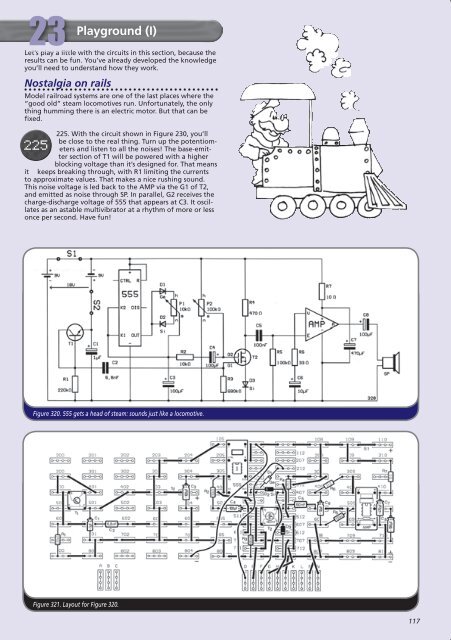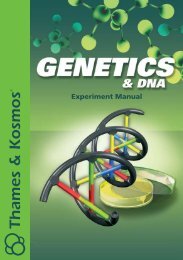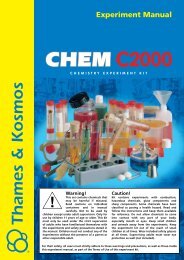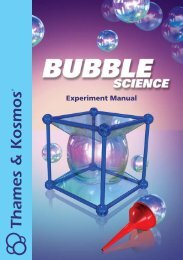615611 Electronics Workshop 2 Manual - Thames & Kosmos
615611 Electronics Workshop 2 Manual - Thames & Kosmos
615611 Electronics Workshop 2 Manual - Thames & Kosmos
Create successful ePaper yourself
Turn your PDF publications into a flip-book with our unique Google optimized e-Paper software.
23 Playground (I)<br />
Let’s play a little with the circuits in this section, because the<br />
results can be fun. You’ve already developed the knowledge<br />
you’ll need to understand how they work.<br />
Nostalgia on rails<br />
Model railroad systems are one of the last places where the<br />
“good old” steam locomotives run. Unfortunately, the only<br />
thing humming there is an electric motor. But that can be<br />
fi xed.<br />
225. With the circuit shown in Figure 230, you’ll<br />
be close to the real thing. Turn up the potentiom-<br />
225 eters and listen to all the noises! The base-emitter<br />
section of T1 will be powered with a higher<br />
blocking voltage than it’s designed for. That means<br />
it keeps breaking through, with R1 limiting the currents<br />
to approximate values. That makes a nice rushing sound.<br />
This noise voltage is led back to the AMP via the G1 of T2,<br />
and emitted as noise through SP. In parallel, G2 receives the<br />
charge-discharge voltage of 555 that appears at C3. It oscillates<br />
as an astable multivibrator at a rhythm of more or less<br />
once per second. Have fun!<br />
Figure 320. 555 gets a head of steam: sounds just like a locomotive.<br />
Figure 321. Layout for Figure 320.<br />
2 5<br />
117











